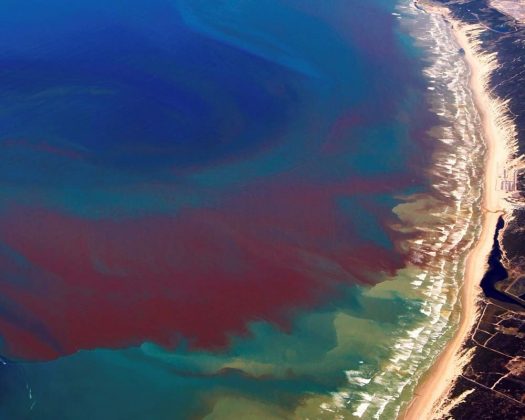Red tides appear almost every year on the coast of southern Florida and usually start around September or October.
However, the new model, created by ECCO Scientific and the Everglades Foundation, can now predict an early warning prediction system for red tide conditions along the coast of southwest Florida a few weeks ago.
It could use scientific data to give 84% accuracy and provide public servants and public time to protect public health and ecosystems before the red tide hits.”
The accuracy and effectiveness of the prediction system was analyzed in a 2024 study of harmful algae by the Everglades Foundation and ECCO Scientific. The weekly forecast warns environmental managers and the public when red tide conditions are imminent, covering the Greater Charlotte Harbor area from Venice South to Estero Bay.
Red tide blooms off the west coast of Florida. Under appropriate conditions, they are transported by ocean currents towards southwest Florida, and nutritious waters along the coast can maintain, extend and fortify flowers. These nutrients come from a variety of sources, both natural and artificial, including spills and waste from our cities and farms, as well as releases from Lake Okeechobee.

The Everglades Foundation says the new weekly forecast will provide advance notice of red tide conditions to inform environmental managers, scientists and the public of prevention and mitigation efforts. For example, predictions allow the U.S. Army Corps of Engineers to avoid releasing nutrient-rich water from the Karosahachi River to the coast when flowers are imminent, and timely public recommendations and shellfish harvest closures protect the public from neurotoxic exposures. The recent grand opening of the Caloosahatchee River (C-43) reservoir represents a step towards alleviating the release of these harmful and nutrient contaminants.
The development of the predictive model was led by ECCO Scientific, a small-scale environmental research and consulting firm in Florida, and was a collaboration from the Science team at the Everglades Foundation. The model uses machine learning algorithms to crunch large amounts of real-time environmental data from satellite images, marine buoys and river gauges on Florida’s west coast. Each week, the forecast predicts the “worst” red tide categories (background, very low, low, medium, or high) expected across the entire Charlotte Port area over the next week and the next four weeks. During testing, predictions achieved accuracy of up to 84%, and usually predicted the onset of new blooms.


